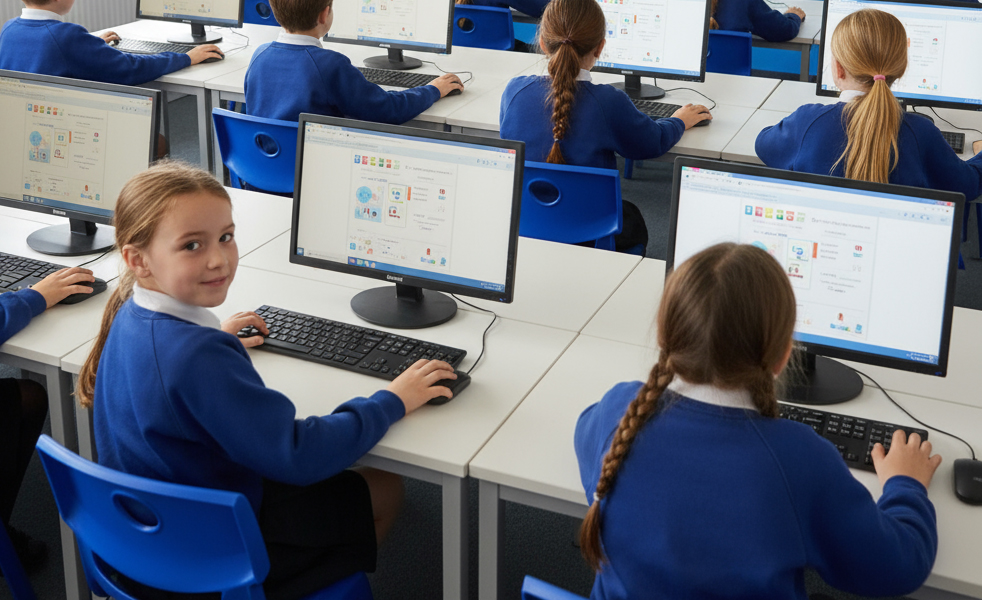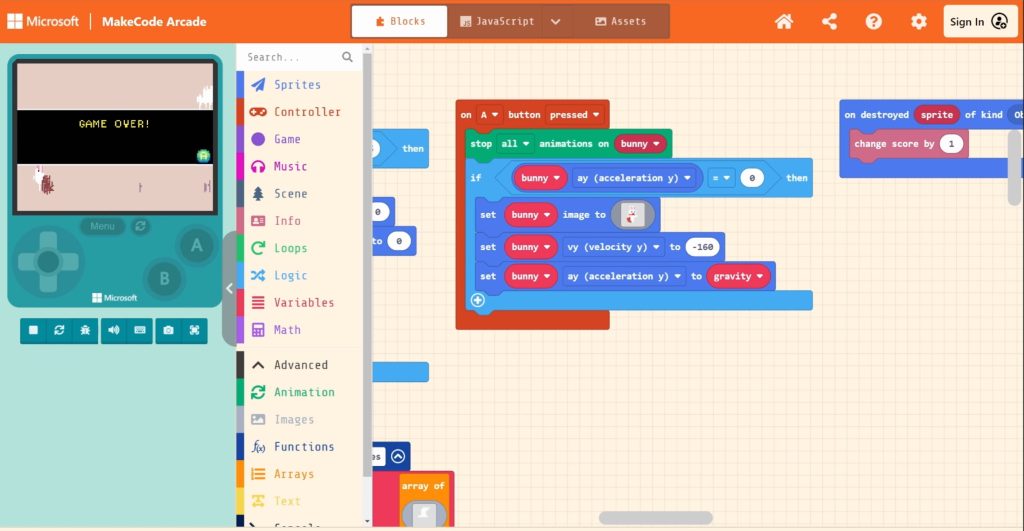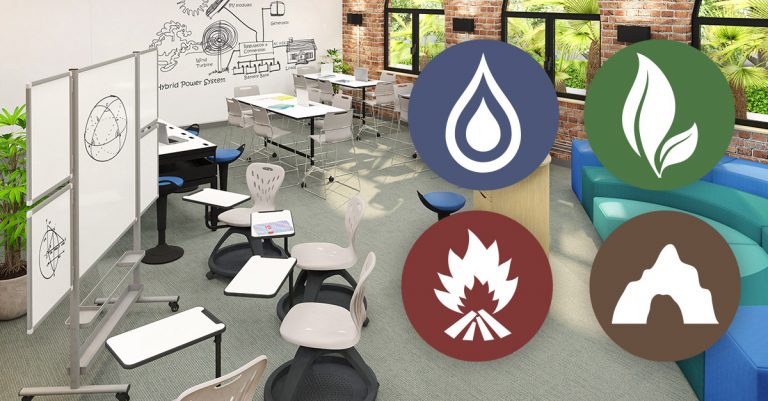Game-based learning—through board games, card games and classroom challenges—has long been used in Australian schools to motivate students and make lessons fun, with teachers employing playful learning strategies for decades as a way to motivate students and deliver elements of the curriculum.
Over the last 30 years, technology has brought new opportunities for gamified learning. Today, mechanics such as earning points, levelling up, and racing against the clock are woven into the curriculum, transforming classrooms into active, engaging environments.
Gamification adds another layer to teaching pedagogy that can be as fun for teachers to plan as it is for students to experience. To help shift lessons from “Miss, I don’t get it” to “Can we play this again tomorrow?”, here’s a practical guide to bringing games into your classroom.
The most notable causes of student disengagement with learning include boredom, alienation, and disconnection between learning activities and the real life application of knowledge.
Shernoff et al. (2003)
A Short History of Gamification in the Classroom
While games in education aren’t new, the Digital Education Revolution (2008–2009) accelerated the integration of digital tools and, consequently, the development of technology-enabled learning games in schools.
The term gamification—the application of game design elements to non-game educational activities—took off globally around 2010, and Australian schools soon followed, particularly in STEM education. Then, throughout the 2010s and 2020s, gamification became embedded in pedagogy, teacher training and policy. State education departments, including NSW, now provide dedicated gamification resources.

The Evidence of how Gamification Benefits Students
Gamifying elements of the curriculum has become a widely popular teaching strategy in Australia, and for good reason.
1. It’s proven to boost engagement & motivation.
A 2023 meta-analysis found that gamification significantly improves engagement and outcomes, though success depends on thoughtful design.
Australian studies, such as a Monash Business School project, show that gamified courses can boost motivation, participation, and performance. Further, features such as feedback loops, leaderboards, and short goal cycles increase attention and persistence—especially in STEM.
2. It aligns with national digital and STEM priorities.
The National STEM Education resources toolkit, recommends gamified learning to build computational thinking and digital creativity. It encourages exploration, safe failure, and iterative practice in scaffolded environments.
3. It encourages collaboration and teamwork.
When built around shared goals and group challenges, gamification strengthens communication, cooperation, and role-sharing. Recent reviews show that cooperative activities enhance teamwork both online and in class. Australian classroom initiatives that teach game creation (e.g., MakeCode Arcade) naturally lend themselves to group projects where students must coordinate coding, design, and testing.
4. It builds problem-solving and critical-thinking skills.
Gamification today goes beyond points and badges – it’s about active, immersive learning where games make content stick. Narratives and quests encourage students to apply concepts, test hypotheses, and think strategically. Literature reviews and experimental studies show gamified tasks can improve decision-making, metacognitive monitoring and systems thinking. Designing games is especially powerful, requiring problem breakdown, debugging and reflection.
5. It creates positive associations with learning.
Studies report that students in gamified lessons report greater satisfaction, positive attitudes and persistence. Australian projects—CSIRO and university collaborations —use gamification to build social-emotional skills and positive mindsets. Research warns against relying only on points; long-term benefits come when game design aligns with learning goals.
6. Pedagogical recognition of active learning benefits
Australian educational research and practice increasingly stress constructivist, social-emotional, and experiential learning approaches. Gamification fits naturally within these frameworks, helping educators design lessons that are engaging, collaborative and conducive to knowledge retention.
Furthermore, state education systems such as New South Wales are supporting game-making initiatives—like using Microsoft MakeCode Arcade—to teach computational thinking and digital creativity in classrooms through gamified pedagogies.
7. Builds resilience and persistence.
Unlike high-stakes tests, games provide a safe space for experimentation, so they learn that failure or mistakes are part of the process. This cycle helps reduce anxiety and encourages students to stay engaged with the material.
8. Supports diverse learners, including those who thrive through kinaesthetic and social play.
Gamification gives students with different strengths—whether kinaesthetic, social, or creative—ways to demonstrate understanding in their preferred way. For instance, a student who struggles with writing may show mastery of science or technology through coding, building or collaborative games.
Practical Gamification Ideas for the Classroom
Tips for successful gamification in the classroom
Align mechanics to learning outcomes — use challenges, feedback and progression to scaffold the specific skills you want students to acquire (not just to add rewards).
Prioritise formative feedback — immediate, informative feedback supports learning more than hollow rewards like points.
Use collaborative game structures to foster teamwork and communication (shared goals, role specialisation).
Build reflection into play (debriefs, design reviews, journals) to translate in-game problem-solving into transferable metacognitive skills.
Different age groups need slightly different approaches to suit their skill level, ability and the curriculum goals they need to meet.

Gamification Ideas for Early Childhood & Younger Primary
These young learners are still at the beginning of their literacy, numeracy and technology journey, so they require games that allow them to practice newly learned content and develop the social skills they’ll need for more complex collaborative projects in future years. Appropriate games include:
- Imaginative Play Zones: Young children naturally gravitate towards role-playing games, so feed their imagination by asking them to act out stories that incorporate new words or concepts they’ve learned using props such as BFX’s AudioArt Cubby Houses, which come in a variety of designs, including a house, truck, submarine, rocket and castle.
- Sensory Games: Create tactile learning activities like dinosaur digs or timed marble runs using Create Sensory Height Adjustable Tables (Create, Discover, or Engage models depending on year level).
- Movement & Colour Play: Play tried-and-true circle games like Duck, Duck, Goose and the I Went Shopping memory game, or ask students to answer simple questions by moving to designated rugs (BFX’s colourful rugs are ideal for this).
- Scavenger Hunts: Hide clues around classroom zones —for example, under or on rugs, in AudioArt cubbyhouses, in drawers, or even in kinetic sand in sensory tables.
Gamification Ideas for Primary & Secondary Learners
- STEM Challenges: Use the Oodle STEM Deluxe Package or Integrate STEM Table for group problem-solving races or timed construction challenges. This works particularly well for robotics.
- Collaborative Writing & Drawing Games: Get their creative juices flowing with whiteboard games like Wheel of Fortune, Hangman, Pictionary or Draw/Write and Pass, which can be themed around content in the current learning unit. The Blaze Vision Board or Fanfare Mobile Porcelain Whiteboard are ideal for these games.
- Classic Classroom Games with a Twist: “Heads Down, Thumbs Up” is simple, but it is a great way to test knowledge and always gets laughs when people see how others answered.
- Narrative-based Quest Learning for Skill Progression: Design your learning module as a quest narrative, where students progress through themed “missions” aligned with curriculum goals. Students can complete challenges and get to specific checkpoints that confirm their learning and provide feedback before moving on. You can make these quests as sophisticated as you like with levels, badges, and even branching paths for greater learning autonomy. This quest-based structure draws on theories of flow, self-determination and experiential learning to foster intrinsic motivation and self-mastery.
- Dice Games: Roll dice for randomised math or vocabulary challenges printed on cards. Students can work in pairs or small groups.
- Table-top Role Play Games: Dungeons & Dragons, and dozens of spinoffs with different themes (e.g. Star Wars) require students to exercise a range of skills and competencies, including creativity, critical thinking, literacy, numeracy, problem-solving, collaboration and communication.
For either age group, comfortable furnishings are more conducive to games than hard desks and chairs, so move your games to areas with cosy chairs, modular sofas and ottomans.

Bringing Learning Games to Life with Technology
According to an article published by the University of Sydney, 93% of Australian children aged 5–14 play video games regularly, with two-thirds of children in Australia aged 9–12 reportedly playing Minecraft at least once a month. It’s no surprise that children and young people feel overwhelmingly positive about their online gameplay. It makes sense, then, to transfer that motivation to the classroom.
Here are some technology-first gamification ideas to consider:
- Teach children from 5-7 years old to code with Scratch Junior. It’s fun and creative, making children keen to engage with it – even at home on their own devices.
- Online team quizzes can be created easily on platforms like Kahoot and Wayground (formerly Quizziz) and incorporated into quests.
- Use gamified learning platforms to help students develop social-emotional competencies such as emotional awareness, self-regulation and empathy. Australian-led research (Mindfields program) shows that gamified SEL interventions significantly increase students’ emotional engagement, understanding, and confidence compared to traditional approaches (learning-lab.uq.edu.au). The CSIRO and Griffith University’s Biobot Academy initiative integrates gamified scenarios and reward structures to scaffold pro-social behaviours and emotional learning in primary school contexts.
- Ask students to design and build games collaboratively—for example, coding a cyber-maze or simulation in Microsoft’s MakeCode Arcade. These projects require teamwork, role-sharing, peer feedback and shared problem-solving, consistent with constructivist and experiential learning models.
Final Words
Gamification has roots in longstanding playful teaching methods and, since the advent of technologically equipped classrooms, has today become a well-recognised and embedded pedagogical approach across the Australian education system. Collectively, the evidence suggests that when gamification is well aligned with curriculum goals and carefully designed, it offers a powerful and well-received means of enriching the classroom learning experience.
Ultimately, gamification is about making learning fun and memorable. BFX products support these activities by providing flexible, imaginative, and collaborative furniture solutions that let teachers bring game-based learning to life. Contact our team to discuss how we can support your active learning goals.











